About Tarikh-e Tashayyu' (Encyclopedia of Shiite History)
Introduction:
Shia is a natural offspring of Islam, and contrary to the belief of some common scholars or orientalists who, out of ignorance or stubbornness, introduce the beginning of Shiism as related to the periods after the death of the Prophet Muhammad (PBUH) and a newly created religion or one established by the enemies of Islam, the beginning of the life of this religion was during the time of the Prophet Muhammad (PBUH).
Given the words of the Prophet Muhammad (PBUH) and his explicit references at various times, including the incident of Ghadir Khum regarding the succession and caliphate of the Commander of the Faithful (PBUH), some of the companions found salvation in pure obedience to the Commander of the Faithful (PBUH) and his infallible descendants, and they insisted on this love and obedience, and for this devotion, they incurred heavy costs.
By adhering to the Holy Quran and following the infallible Imams (AS), and considering the conditions and requirements of each era, sometimes with the weapon of taqiyyah and sometimes with the fury and uprisings against tyrannical and justice-seeking governments and usurpers of the rights of the children of the Messenger of God (PBUH), the Shiites have walked the winding path of history with dignity and honor.
Despite the all-out efforts of the enemies of the true Shiite religion and their relentless pressures and the lack of benefit of the Shiites from government facilities, the followers of the Shiite religion, with great efforts and sacrifices, have made a great contribution to the emergence of various sciences and arts and played an undeniable role in the growth and expansion of Islamic culture and civilization, the spiritual and cultural manifestations of which can be seen in books and writings, and its material and civilizational manifestations in the works left behind by Shiite personalities and governments.
The Islamic Revolution of the Iranian people, under the guidance of Shiite scholars, was able to once again attract the world's attention to this flexible religion and the attention of those seeking truth. As a result, scientific and academic centers around the world held Shiite conferences and seminars in a serious and curious manner, conducting research and investigation into the Shiite religion and its teachings.
Introducing and defending Shiite teachings and ideals and helping Shiites and Shiite scholars by providing reliable sources in identifying the Shiite religion prompted us to put on the agenda the production of a software program entitled Encyclopedia of Shiite History, in accordance with our mission of digitizing Islamic and humanities science resources. Now, after 5 years of extensive scientific and technical efforts and pursuits in the direction of providing resources and presenting historical information in the form of various scientific tools, the first version of this program is being offered to interested parties. Surely, after receiving the opinions of experts and eliminating the shortcomings that we are aware of, we will take this bright path with more solid steps in the next versions.
Overview:
The Encyclopedia of Shia History is a collection of valuable information about the Shia religion and the activities of the Shiites from the time of the emergence of this religion to the present century. The resources and information of this program have been collected and categorized in various sections such as the library, tree, article bank, gallery, and celebrities and scientists. Investigating the emergence and ups and downs of Shiaism, the cultural and civilizational position of the Shiites, and their socio-political life in different historical periods, through reliable sources, are among the important missions of this software.
- Investigating the time of the emergence and historical course of the Shia religion from reliable sources;
- Familiarizing yourself with the scientific, political, cultural, and social position of the Shiites in historical periods;
- Making important sources and books related to Shia and Shiism available to facilitate research;
- Explaining authentic Shia beliefs and thoughts to prevent distortion and poisonous propaganda and implicitly responding to important doubts about the Shia religion;
- Filling the existing gap and responding to expectations in the field of producing digital programs about the history of Shia.
Background:
Although many software programs have been produced about Shia and Shiism, none of them deal with specific historical topics, but rather their approach is mostly the theology and teachings of the Ahl al-Bayt (AS), which will be part of the Shia history program, not all of it; therefore, this project with defined dimensions has no precedent or precedent.
Content scope:
1. Library:
300 of the most important books related to Shiite history are presented in this software for the purpose of studying and researching the Shiite religion and the status of the Shiites. Despite all the efforts made and various consultations, unfortunately, some books related to Shiite history are not available in the program library due to the lack of agreement from the owners of the works. We hope that in the near future, by changing our approaches, we will be able to include all the necessary and useful books in the next versions of the program and provide them to users.
Thematic scope of the program books:
- The emergence and spread of Shiiteism: 44 books;
- The beliefs of the Imamiyya Shiite: 25 books;
- Shiite sects: 32 books;
- Shiite tribes and families: 6 books;
- Shiite movements and uprisings: 26 books;
- Shiite states: 36 books;
- Shiite culture and civilization: 64 books;
- Geographical distribution of Shiites: 39 books;
- Shia from the perspective of others: 3 books;
- Refutations and defenses: 25 books.
Despite all the efforts made and various consultations, unfortunately, permission to use some important books related to Shiite history was not granted by the respected authors, researchers, or publishers in the Shiite History software, which would certainly have enriched the content of the program.
We hope that in the near future, with the change in the approaches of some respected authors and publishers towards the software and the digital space, we will be able to include all the necessary and useful books in the next versions of the program and offer them to users.
The names of a number of books that we were not allowed to use in the Shiite History program due to the lack of permission from the owners of the works:
1. The political and cultural life of the Shiites of Baghdad;
2. Rijal Kashi;
3. History of the World Explorer Juwayni;
4. The Image of Shia in the Encyclopedia Americana;
5. Cultural Revival during the Buyid Era;
6. History of Ismaili;
7. Shia and Sufism until the Beginning of the Twelfth Century AH;
8. History of Shia and Islamic Sects until the Fourth Century;
9. History and Beliefs of Ismaili;
10. Shia in India;
11. The Uprising and Movement of the Alawites of Zagros;
12. The Nobakhti Dynasty;
13. Introduction to the History and Sources of Hadith;
14. Imamiyyah and Politics in the First Centuries of Occultation;
15. History of Shia in Kermanshah from the Beginning to the Present, Including the Doctrinal Background in Western Iran;
16. Shiism, a journey through Shiism culture and history;
17. The Marashian uprising;
18. Majma’ al-Tawarikh al-Sultaniyyah;
19. The origin of Shiism and the emergence of Shiite sects in the era of the Imams;
20. The political, social and cultural situation of Shiites during the minor occultation;
And...
2. Article bank:
Due to the problems of using articles in software, including legal issues and intellectual property of articles and technical requirements, for the first time in the Noor Center programs, about 1,200 valuable specialized articles in the field of Shiite history will be extracted from the Noor specialized magazines website NOORMAGS and will be presented in this program in a tree-like classification after content and scientific studies are reviewed. After selecting an article and viewing the article information and the link and image of the first page of the desired article, the user can view the full text of the article in the Noor specialized magazines database NOORMAGS. The time limit for selecting articles is until 2009, and the number of articles will be increased in subsequent versions of the software.
3. Tree of Shiite History:
Information on 120 volumes of books related to the history of Shiite Islam, including various aspects of understanding the Shiite religion and the activities of Shiites throughout history, will be available to the user in a specialized and systematic manner in a tree with more than 40,000 references, which the user can refer to in the shortest possible time to reach the desired article from reliable sources. The emergence and spread of Shiite Islam, the beliefs of the Imamiyya Shiite sect, Shiite tribes and families, Shiite movements and uprisings, Shiite governments, Shiite culture and civilization, the geographical distribution of Shiites and Shiites from the perspective of others are the main branches of the tree of Shiite history. One of the notable features of this section of the program is the enrichment of the Shiite history information tree with articles, images, and maps, which has been done with great effort so that the user can simultaneously access other useful extensions while studying related texts and sources, and this will greatly help in better understanding and comprehension of the material.
Names of some books connected to the tree section:
1. Shiism on the Path of History;
2. Shiite Divisions;
3. Rijal Najashi;
4. Shiite Eminences;
5. Shiite Positions;
6. Shiite in Islam;
7. History of Kufa;
8. Nesma al-Sahar with the remembrance of Shiite and poetry;
9. History of Tabaristan;
10. Defense of Shiism;
11. Shiism, Doubts and Responses;
12. Shiism Literature in North Africa;
13. Shiism Founders of Islamic Culture;
14. Shiism in the Book of Baghiyyat al-Talib;
15. History of Shiism in Azerbaijan;
16. Zayd ibn Ali and the Legitimacy of the Revolution in the Eyes of the Household;
17. Dictionary of Shiism Historians;
18. Historical Roots of Shiism in Iran;
19. Shiism in the Mongol Era;
20. Shiism Revolutions;
21. Shiism in the Procession of History;
22. The period of Shi'a in the construction of Islamic civilization;
23. Al-Shi'a, Al-Juqur and Al-Simud; 24. Al-Shia and the oppression of the sultans; 25. In the literature of al-Iraq al-Hadith; 26. Shia (Henry Carbon's collection of talks); 27. The political and intellectual life of Zaidi; 28. The tradition of mourning and chanting in the history of Shia Imamia; 29. Al-Shi'a fi masaram al-tarikhi; 30. 31. Abdullah bin Saba and other myths; 32. Al-Shia in Egypt; 33. The history of Shia in the coast of the northern region of Al-Sham; 34. Shia in Saudi Arabia;35. Shia in North Africa;
36. Shia in the World;
37. Shia and the Arts of Islam;
38. Shia of Baghdad;
39. Exaggeration, an Introduction to Thoughts and Beliefs;
40. Shia Studies and English-Speaking Shia Scholars;
41. The Foundations of Shia in Sunni Sources;
42. Kashan on the Path to Shiaism;
43. Shia Uprisings;
44. The Charter of Imamiyya Beliefs;
45. Egyptian Fatimid Shiism;
46. Shia in Their Beliefs and Thoughts;
47. The truth of twelfth-century Shia;
48. Al-Anba Al-Khefiyyah on Al-Shi'a Al-Alawiyyah; 49. The role of Yemeni tribes in supporting Ahl al-Bayt; 50. Nakhawale Shia community in Madinah Munura; 51. Al-Shia in history; 52. Khorasan Sarbedharan Movement; 53. Jihad al-Shi'a in the al-Abbasi era; 54. The origin of Al-Shi'a and Al-Shi'a; 55. Shia poetry and Shia poets; 56. Alaviin revolutions; 57. The origin and expansion of Shiism; 58. Al-Alawiyun in Al-Hijaz; 59. History of the Fatimids;60. Shia in the Hadith of Others;
61. Al-Maqalat and Al-Furq;
4. Celebrities and Scholars:
Biographies of Shia celebrities and scholars with more than 50,000 text references are another strength of the Shia History program, which can pave the way for a new style in Shia studies, especially the knowledge of Shia scholars and dignitaries. Scattered information from translation books related to the lives of Shia scholars has been collected in neat and original forms, and based on that, a Shia celebrity tree has been created, which allows you to access information about the individual's personal and scientific life and the person's various positions and situations throughout his life by selecting the name of the person in question.
Names of some books used in the Celebrities section:
1. Rijal al-Tusi;


 Buy Now with
Buy Now with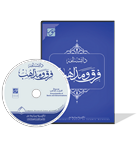




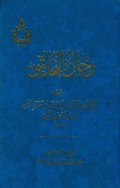




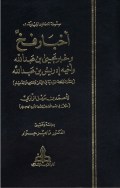

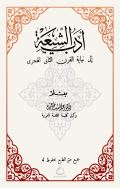
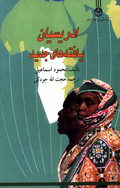
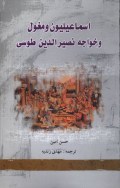
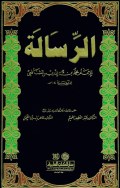








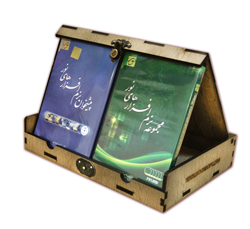
Share your thoughts with other customers